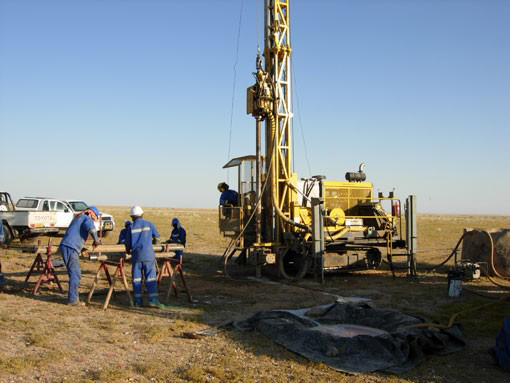
New processing technology reduces operating costs at Namibian uranium projects

Australian Stock Exchange-listed uranium miner, Marenica Energy has now commenced studies to apply its proprietary processing technology, U-pgrade, at the Marenica Uranium project, the Australian miner’s majority-owned uranium deposit at Trekkopje in the Namib desert.
Announcing the move this week through the stock exchange news service, Marenica said a scoping study was completed on the project in 2011, since then the company has developed its processing technology, U-pgrade, providing the potential to halve process operating and capital costs at its Namibian mine.
After the scoping study, testwork on Marenica’s game changer U-pgrade technology was concluded towards the middle of 2016. During the testing phase, initial results at Namibian ore bodies, including that Deep Yellow’s Tumas and Marenica’s Trekkopje open pit exploratory mining operation, indicates a substantial saving for uranium miners. This prompted Marenica to conduct a revised scoping study which was announed this week.
U-pgrade is an innovative recovery technology that Marenica hopes will drastically reduce its operating costs, helping the entire industry to survive the cycle of depressed uranium prices.
In addition, Marenica stated that mining development costs have reduced significantly since the original scoping study was conducted. These factors, together with expectations for a reboot of the uranium sector in the medium term have encouraged the Marenica Board to revise its studies on the economics of the Trekkopje project.
The revised scoping study is expected to be completed within 3 months, and will create a platform to consider a more detailed feasibility study later in 2017.
Marenica said it can now continue with the new scoping study after the Ministry of Mines and Energy issued them with a Mineral Deposit Retention License only a month ago in December 2016.
Marenica´s MD, Murray Hill said, “This revised scoping study will provide an opportunity for Marenica to reset the economics of the project in light of the material advancements possible using the U-pgrade technology and the more competitive cost environment in which the industry finds itself in at the moment”.
He added, “The project´s world scale size, its shallow and easily accessible orebody and Marenica´s own U-pgrade technology combine powerfully to demonstrate its competitive and low risk production capacity once prices recover as we expect”.
Marenica´s Chairman Doug Buerger said, “Re-focusing on the Marenica Project comes at a time where perhaps we are seeing the first green shoots in the uranium industry. We are strongly committed to the potential of this project and in taking our place in the development queue of new projects in preparation for better times”.
“Progressing our own projects using U-pgrade is both complementary and supportive of our corporate strategy of developing a portfolio of uranium interests and providing our shareholders with a leveraged and diversified exposure to the medium term prospects in the uranium market,” he added.
The company stated that although the low grade of the deposit would normally make development challenging in all but the more optimistic uranium price scenarios, the U-pgrade technology is capable of concentrating the ore by a factor of 50 time to materially improve the economics of the project.
Furthermore, Marenica also intends to channel the expertise within its Technical Steering Committee to revisit all parts of the mining operation to identify further performance and cost improvements. By applying this technology and technical expertise through the revised scoping study it hopes to establish a profitable uranium operation in the US$65 to US$75 per pound, price band.
Marenica believes the fundamentals are in place for a rebound in the uranium market in which prices will need to rise substantially to support investment in new mine capacity. Commencing the revised scoping study now would place the project on a timeline to compete with other projects when the uranium price recovers.











































